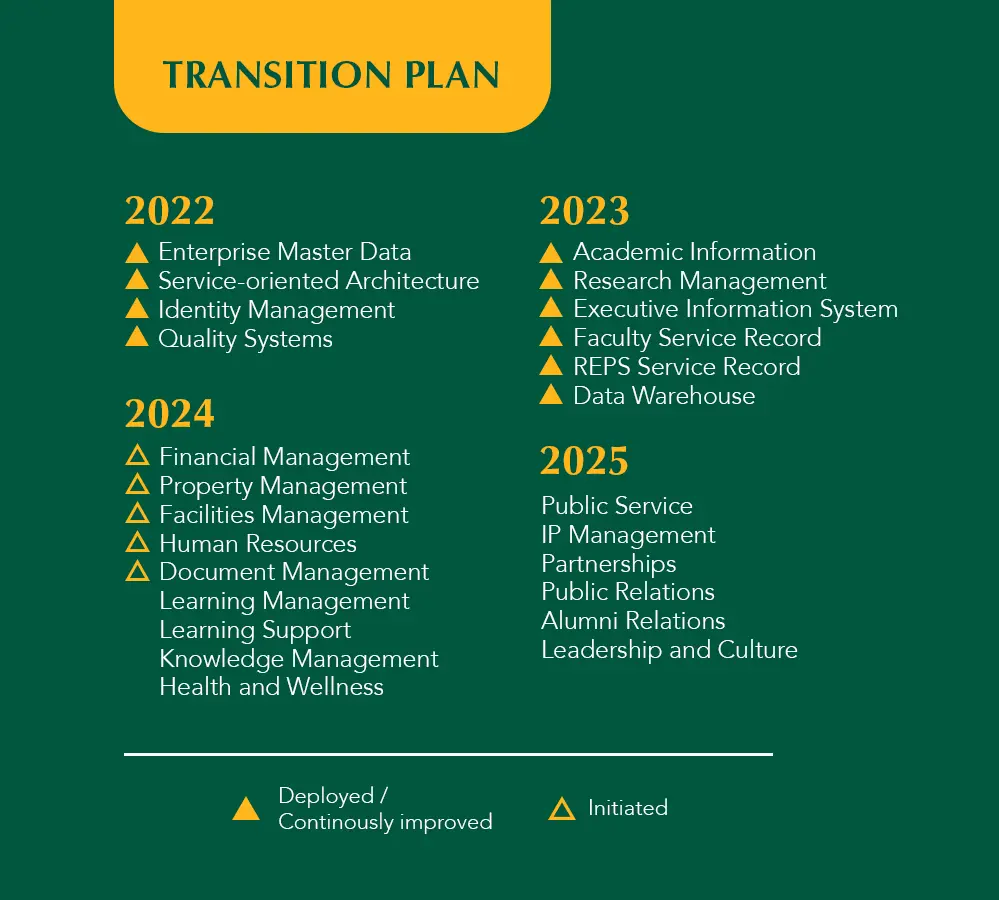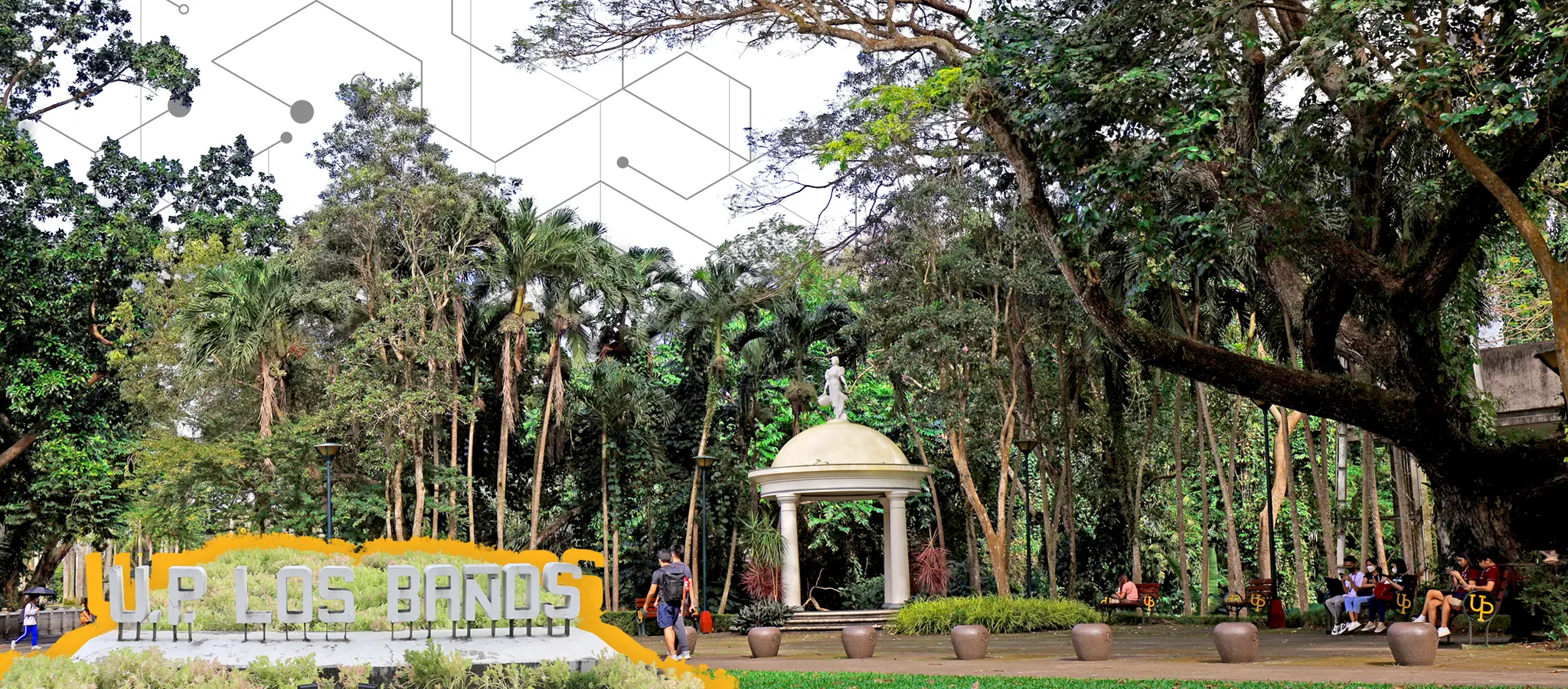
“IT factor” refers to a noteworthy quality that would take one’s life to the next level. IT may very well refer to information technology that UPLB could use to make it exceptional in future-proofing against disruptions, one that would make it resilient amidst VUCA or the volatility, uncertainty, complexity, and ambiguity of the digital age.
UPLB had early leads on this, as evidenced by systems created for the specific objectives of sectors or offices, thus fragmented, but could have been incorporated or interconnected into a broader and efficient system. But the university’s efforts in this regard were soon formalized.
In 2021, Chancellor Jose V. Camacho, Jr. assembled a team to craft UPLB’s Enterprise Architecture Plan (EAP), a strategic and comprehensive framework or blueprint to guide the university toward digital transformation (DX). It was headed by Danilo J. Mercado, faculty member at the Institute of Computer Science, and Leslie G. Bolaños, student records evaluator and quality manager of the Graduate School.
IT or information technology and DX are crucial elements toward future-proofing an organization. DX is the application of IT to improve the processes and efficiency of services. More importantly, DX addresses the most crucial elements in driving transformation: people, policy, and change management.
The roadmap
In the UPLB DX system, EAP outlines the technology solutions, principles, and standards to align IT initiatives to the university’s core organizational needs.
Leaders and teams will be trained before the scheme is implemented across the university, and the final stage involves continuous measuring and learning from the developed DX system.
“In collaboration with UPLB’s top management and key stakeholders, we envision to come up with a responsive, impactful, people-centric, and future-proof Enterprise Architecture that supports the university’s core mandate and future endeavors,” said Mercado, who was also in charge of the infrastructure development and support of UPLB DX.
EAP’s transition plan covers all priority applications for development, including IT solutions for academic information, knowledge management, and health and wellness.

The UPLB DX initiative
The UPLB DX was created to implement the EAP. It will co-create systems with various university units. Bolaños heads the DX Program and DX Team. He is responsible for monitoring and applying the UPLB DX strategy. He will also oversee the harmonization of existing systems to make them useful and available to other units needing them.
Among these is the Output Reporting System of the Office of the Vice Chancellor for Research and Extension (OVCRE), where employees encode their various work outputs. The system currently accommodates scholarly outputs. In the next upgrades it will be able to generate reports used for merit promotions and annual reports. OVCRE’s Research Management System is integrated into the research and extension-related data.
The Office of the Vice Chancellor for Student Affairs maintains the Research, Communication, and Information Technology (RECOMMIT) Program Automated Loan Processing, through which students apply for loans online using the Office of Student Affairs Management (OSAM) System. OSAM System facilitates the processing of data in the application form and has significantly reduced errors and eliminated the need for data encoders.
RECOMMIT’s Automated Student Assistantship (SA) Salary Processing assists the SA Program of the Office of Scholarships and Grants in developing and maintaining an online, automated, and efficient SA salary processing and payment.
Various colleges and the University Library also maintain their own student records management systems. UPLB uses the University Integrated System for human resource management, financial, and administrative processes and the Student Academic Information System for registration and learning-related processes.
According to Bolaños, the DX Program aims to harmonize and unify these systems to enhance functionality while also enhancing data integrity.
The lessons learned
Academic Year 2022-2023 was a sharp pivot point for the DX Team.
Just after beginning its operations in March 2022, they had to release the Academic Management Information System (AMIS) to cater to student registration, in particular, the giving of consent of instructors and the exercise of teacher’s prerogative.
It was the team’s baptism of fire. “We were still building the foundation systems, and here comes AMIS. It’s like building the second floor on an untested foundation. But on the contrary, building AMIS served as a proving ground for the team and the selected technology stack which paved the way for improving the foundation systems even more,” Bolaños said.
AMIS provided ways forward for the university. “We were able to extract data that pinpoint the in-demand courses that support the hiring of more faculty members or allocating of better resources,” Bolaños said. It also guided them to create an executive information system, a dashboard that will help university officials monitor their concerns and easily address these.
“We like to be agile. Our method is creating a plan, building the important parts, launching, asking for feedback, and then implementing the suggestions. In this way, we can solve the problems through small parts rather than through grand solutions,” he concluded.
Bolaños expects his team to produce guidelines that consist of their operations, coding standards, and best practices that can be passed on to units that plan to co-create their own DX project.
“The solution to VUCA is VUCA as well,” said Bolaños. “We can combat VUCA through relevant and real-time information generated through the DX system we will develop. This will create VUCA or vision, understanding, clarity, and agility, which will help us develop the solutions.”
Share this on:



